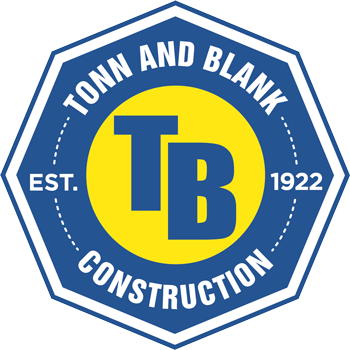How Virtual Design Simplifies Construction Projects
Gone are the days when blueprints and two-dimensional drawings were enough to launch a construction project. Today, architects, engineers, and contractors leverage the power of virtual design and construction (VDC) to design beautiful, functional buildings. With this innovative technology, you can streamline your design, planning, and delivery process.
Savvy professionals use Building Information Modeling (BIM) to turn each project design into an immersive digital environment that supports simulation and visualization while enabling seamless collaboration. Virtual design coordination simplifies the construction process—from concept to completion—while delivering exceptional results each time.
Dig in as we explore how virtual designs can give you the edge you need to dominate the market while building a roster of happy clients.
Enhanced Communication
Poor communication is the bane of the construction sector, especially for projects with multiple stakeholders. Virtual design lets you visualize the project by creating 3D models at the preconstruction stage. You may use virtual simulations, augmented reality, or virtual walkthroughs to help your stakeholders understand the design intent. Visual representation simplifies complex concepts, reduces misinterpretations, and allows efficient decision-making. It enables different specialists, including contractors, engineers, electricians, and architects, to communicate, collaborate, and create a flawless design.
Clash Detection and Conflict Resolution
Creating a virtual design with BIM technology during the preconstruction stage supercharges your clash detection capabilities. Digital models allow you to combine all components and analyze different building systems for clashes and conflicts. Identifying potential clashes between your structural, electrical, mechanical, and plumbing systems during the design phase is priceless. It allows you to resolve the issues in the digital realm long before they morph into costly physical problems on the construction site. Digital modeling lets you resolve conflicts without expensive reworks, delays, and RFI’s that would otherwise erode your profit margin and customer trust.
Streamlined Coordination and Collaboration
Virtual design allows all experts working on a construction project to collaborate and coordinate their efforts without costly delays. BIM lets you create a shared digital environment where your team can work together in real time. You can also create a central repository with all the project’s information.
A shared digital platform allows your team to exchange information and coordinate design efforts. For instance, structural engineers can vet the architectural design, while mechanical and plumbing engineers can integrate HVAC and plumbing systems.
Contractors can verify constructability and plan implementation stages with the design team. You can also integrate scheduling, costing information, and visualize the construction schedule into the design model. That powers your ability to anticipate potential clashes or logistical challenges and develop contingency plans.
Accurate Cost Estimates
BIM software allows you to automatically extract data from digital models and generate accurate quantity takeoffs and cost estimation data. The software analyzes the model and extracts information such as quantities, dimensions, and building components properties.
The automated process dispenses with the need for manual measurements and calculations, saving valuable time while drastically reducing potential errors. You can link the accurate quantity takeoff data with a reliable cost database and automate cost estimations and material quantities calculations.
Automation allows stakeholders to visualize the cost implication of their design decisions while helping them to evaluate options thoroughly. Alongside streamlining cost estimations, a virtual design also simplifies budgeting and procurement. It lets you establish comprehensive project budgets and minimize the risks of budgetary discrepancies.
Construction Simulation and Planning
Virtual design coordination using clash detection software allows you to visualize the construction process, optimize workflows, identify potential problems, and improve resource allocation. Alongside the 3D geometry of a build, a BIM model also captures relevant information such as costs, material specifications, and schedule.
Your team can virtually simulate the construction process down to the movement of equipment, component installation, and resource deployment. A simulation-based approach also lets you analyze site utilization and construction logistics.
You can conveniently test the impact of different construction sequences, staging areas, and access points on the productivity and project timeline. That provides opportunities to improve site logistics. You can optimize material delivery routes and coordinate contractor activities to minimize disruptions. Optimizing site logistics helps eliminate project delays and improves site safety and productivity.
Value Engineering
Virtual designs support value engineering by helping you maximize a project’s value without compromising cost and functionality. BIM provides a virtual environment that allows stakeholders to evaluate design alternatives while assessing their impact on the schedule, performance, and costs. Your project team can simulate design options using different systems, materials, or construction methods.
You can quickly analyze each option’s price implications, lifecycle costs, energy efficiency, and maintenance requirements. With this approach, you can identify the most effective design that delivers the desired functionality and performance while lowering construction and costs.
Using BIM for virtual design and construction sets the stage for success when planning a new project. It allows you to experiment with different design scenarios and create the most efficient design while eliminating costly mistakes. Using BIM during the pre construction stage helps you avoid typical problems associated with new constructions while delivering exceptional time and cost-saving benefits.
Search the Site
Recent Posts
- Safety Manager Receives Lifesaver Award June 4, 2024
- Championing Workforce Development with a New Pathway May 29, 2024
- FF&E in Construction: The FF&E Process Explained May 23, 2024
- Empowering Tomorrow’s Builders through ACE Mentorship May 7, 2024
- Outstanding Project Safety Award Recipient April 29, 2024
Posts By Category
- Company News (17)
- Project News (32)
- Resources (6)
